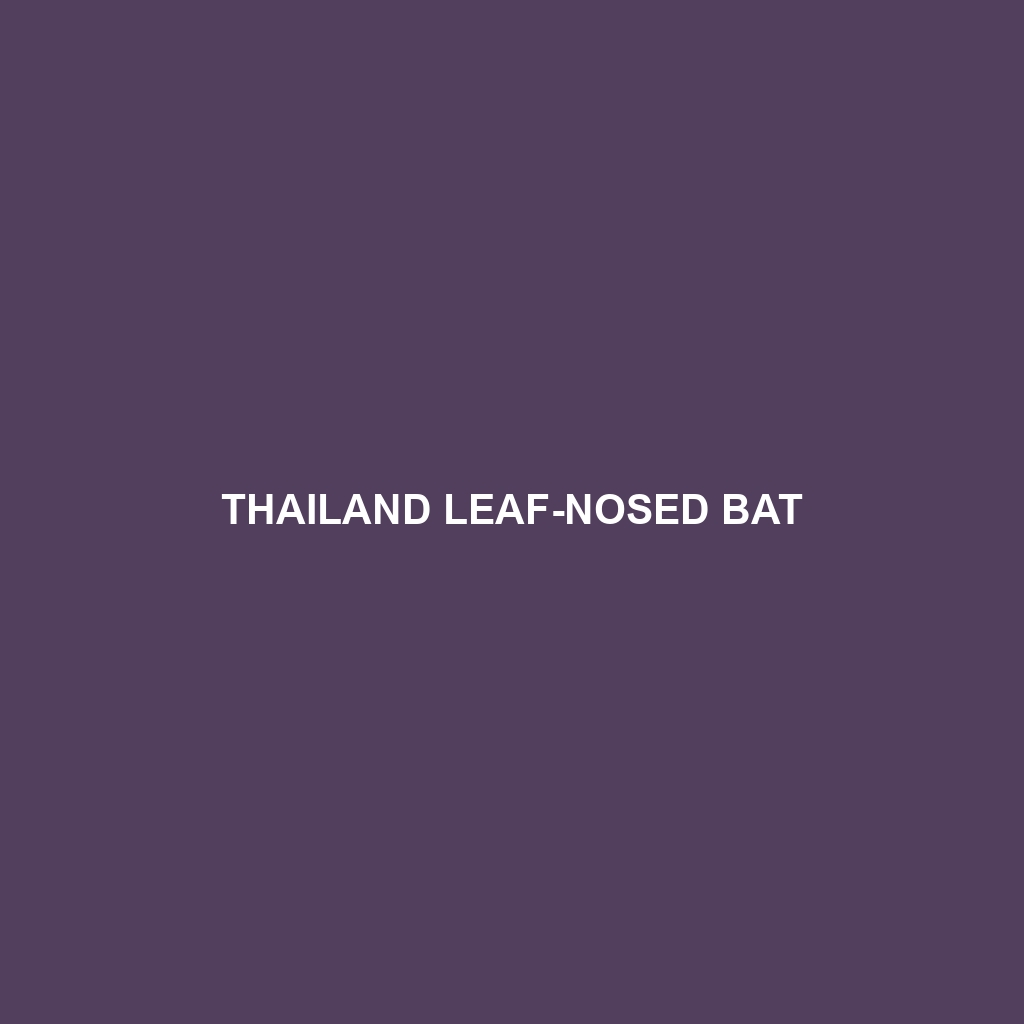Thailand Leaf-nosed Bat: An In-Depth Species Description
Common Name: Thailand Leaf-nosed Bat
Scientific Name: Hipposideros lemur
Habitat: The Thailand Leaf-nosed Bat is primarily found in the tropical and subtropical regions of Southeast Asia, particularly in dense forests, caves, and limestone hills. This species thrives in moisture-rich environments, often inhabiting areas near water sources such as rivers and streams. Its geographical range includes specific locations in Thailand, Laos, and Myanmar.
Physical Characteristics: Thailand Leaf-nosed Bats are medium-sized bats, typically measuring between 9 to 12 cm in body length, with wingspans reaching up to 35 cm. They are known for their distinctive leaf-shaped nose, which aids in echolocation. Their fur is generally soft and can vary in color from light brown to dark gray, often featuring paler underparts. These bats have large, rounded ears and robust bodies, making them easily identifiable in their natural habitat.
Behavior: Thailand Leaf-nosed Bats exhibit nocturnal behavior, being most active during the night. They are social creatures and often roost in colonies, hanging upside down in caves or dense foliage. Their echolocation abilities allow them to navigate and hunt for insects in total darkness. These bats are known for their agile flight and can perform complex maneuvers to catch prey mid-air. Additionally, their social structures often involve vocal communication with each other through a variety of sounds.
Diet: The diet of the Thailand Leaf-nosed Bat primarily consists of insects, with a particular preference for moths and beetles. They forage actively using echolocation to detect prey, showcasing their adept hunting skills. Their feeding habits are vital for controlling insect populations, thus maintaining ecological balance within their habitat. The bats often feed in open areas or along the edges of forests where insect activity is high.
Reproduction: Thailand Leaf-nosed Bats typically breed during the warmer months, with a gestation period of approximately 2 to 3 months. Females usually give birth to a single pup, which is nursed for several weeks before becoming independent. Breeding colonies may gather in specific roosting sites, enhancing the social aspect of their reproductive behavior. Notably, the pups are born with fur and are capable of hanging alone within days after birth.
Conservation Status: The Thailand Leaf-nosed Bat is currently listed as a species of “Least Concern” on the IUCN Red List; however, it faces threats from habitat destruction, particularly due to deforestation and human encroachment. While the species is not endangered at this time, conservation efforts are essential to ensure its continued survival, given its reliance on specific environmental conditions.
Interesting Facts: One fascinating aspect of the Thailand Leaf-nosed Bat is its unique nose shape, which is not only a defining characteristic but also assists in their echolocation processes. Additionally, they are known to sometimes share roosts with other bat species, showcasing an interesting aspect of bat social behavior. Their exceptional agility makes them formidable hunters of flying insects, playing a significant role in their ecosystem.
Role in Ecosystem: As natural pest controllers, Thailand Leaf-nosed Bats contribute significantly to their ecosystem by regulating insect populations. Their feeding habits help maintain the balance within their habitats, making them crucial members of the food web. Furthermore, their presence indicates a healthy ecosystem, as they thrive in well-preserved environments, thus serving as bioindicators for ecological health.
